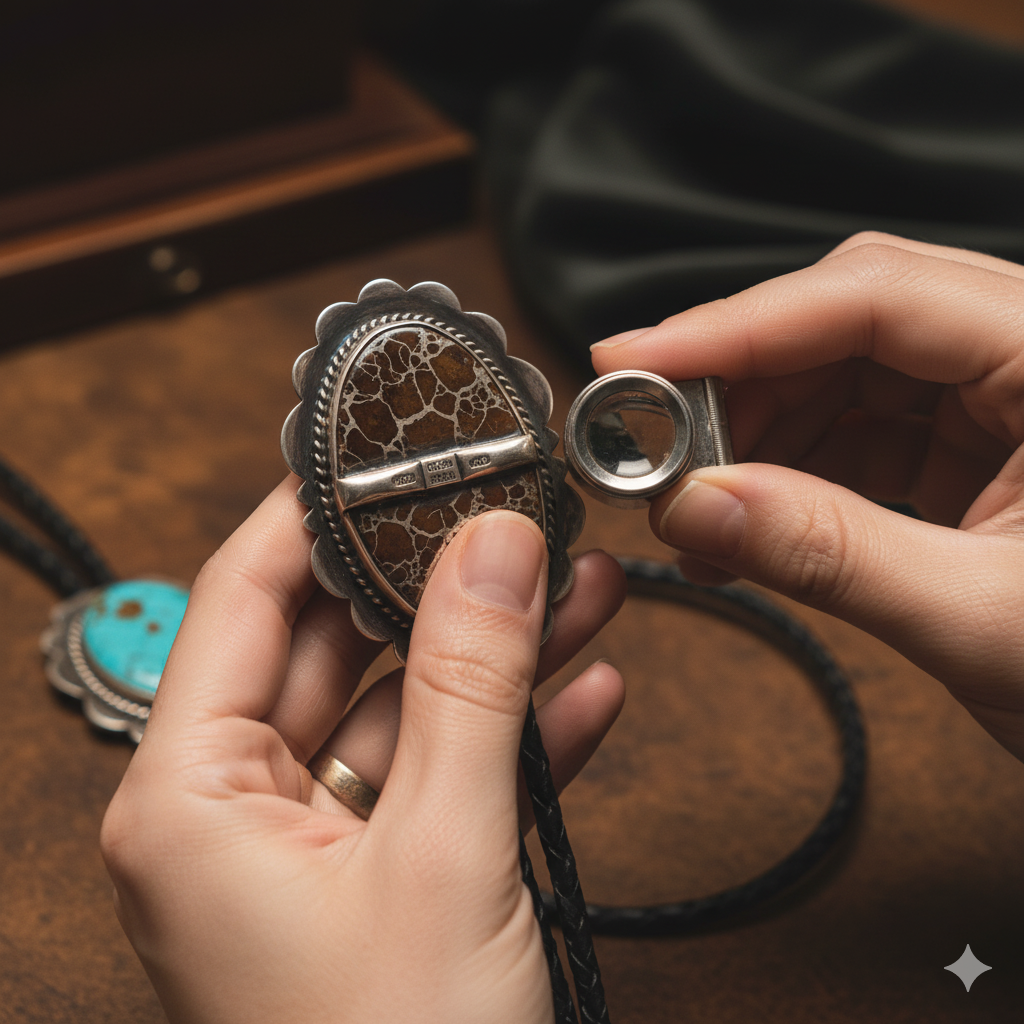
How to Authenticate a Vintage Bolo Tie in 5 Steps
Share
Introduction: From Admirer to Authenticator
The allure of a vintage bolo tie lies in its authenticity—the feeling that you are wearing a genuine piece of history. But in a market filled with reproductions and pieces of indeterminate age, how can you be sure you're acquiring a true artifact?
As collectors, we've spent decades honing our eyes to the subtle clues that separate a genuine vintage treasure from a simple second-hand piece. The good news is that you don't need years of experience to start making informed decisions. We've distilled our process into a simple, professional 5-step checklist. Follow these steps, and you'll be able to assess any vintage bolo tie with the confidence of a seasoned expert.

Step 1: Examine the Clasp - The Birth Certificate
Always start with the back of the slide. The clasp mechanism is the single most reliable indicator of a bolo tie's age. While early pieces used simple friction loops, the invention of the spring-loaded Bennett clasp in the 1950s became the industry standard for quality. Look for the "Bennett Pat. Pend." marking as a strong sign of a piece made between the mid-1950s and the late 1980s.
Expert Tip: For a complete breakdown of the different markings and their specific dates, this is a topic we explore in our comprehensive reference guide: A Deep Dive into the Bennett Clasp Timeline.
Step 2: Look for the Artist's Hallmark - The Signature
On higher-quality, artisan-made pieces (particularly Native American), look for a small, stamped symbol or set of initials, also on the back of the slide. This is the artist's "hallmark," or signature. Its presence is a strong indicator of a handcrafted, rather than mass-produced, item. Identifying the hallmark can link a piece to a specific artist and a rich history, a subject we celebrate in our Artisan Showcase.

Step 3: Assess the Materials - The Body of Evidence
The materials themselves tell a story.
- The Silver: Look for a "925" or "Sterling" stamp. More importantly, look for a natural patina—a soft darkening in the crevices that shows genuine age. Learn more in our guide to Noble Metals & Modern Alloys.
- The Stone: Vintage turquoise often has a depth and character that is hard to replicate. Stones from famous, now-closed mines can have unique colors and matrix patterns. For an in-depth look, consult our Guide to Turquoise & Other Stones.

Step 4: Evaluate the Craftsmanship - The Artistry
Look closely at the quality of the work. Is the stone securely held in its bezel? Are the edges of the silverwork smooth and well-finished? Are the cord and its aglets (tips) of high quality and in good condition? Small details often reveal the difference between a master craftsman and a lesser-quality production. We deconstruct all these elements in our Anatomy of a Bolo guide.

Step 5: Trust Your Source - The Final Checkpoint
Ultimately, the most important step is to buy from a seller you trust—one who is transparent about their pieces, provides clear photos, and demonstrates genuine expertise. A reputable dealer should be able to answer your questions about the clasp, the materials, and the likely era of the piece. Our commitment to this transparency is the foundation of Our Manifesto.
Conclusion: Buy with Confidence
By following these five steps—examining the clasp, looking for a hallmark, assessing the materials, evaluating the craftsmanship, and trusting your source—you are no longer just a buyer. You are an informed collector.
You are now ready to explore our Vintage Bolo Ties collection with a new, expert eye.
